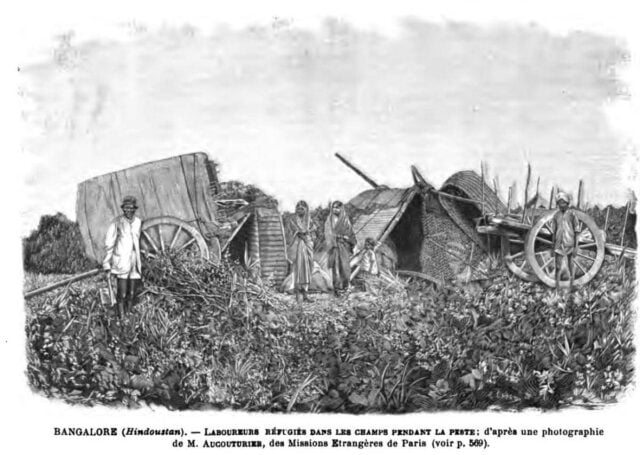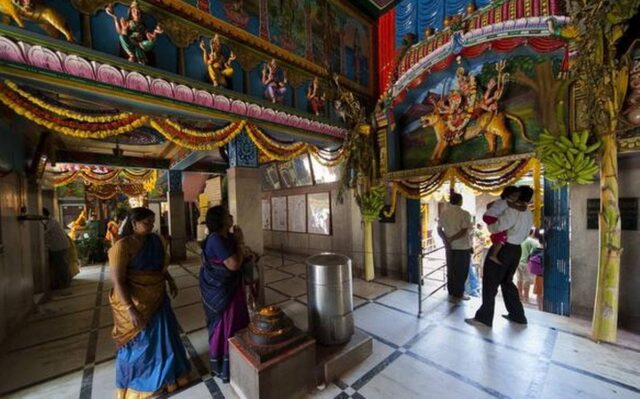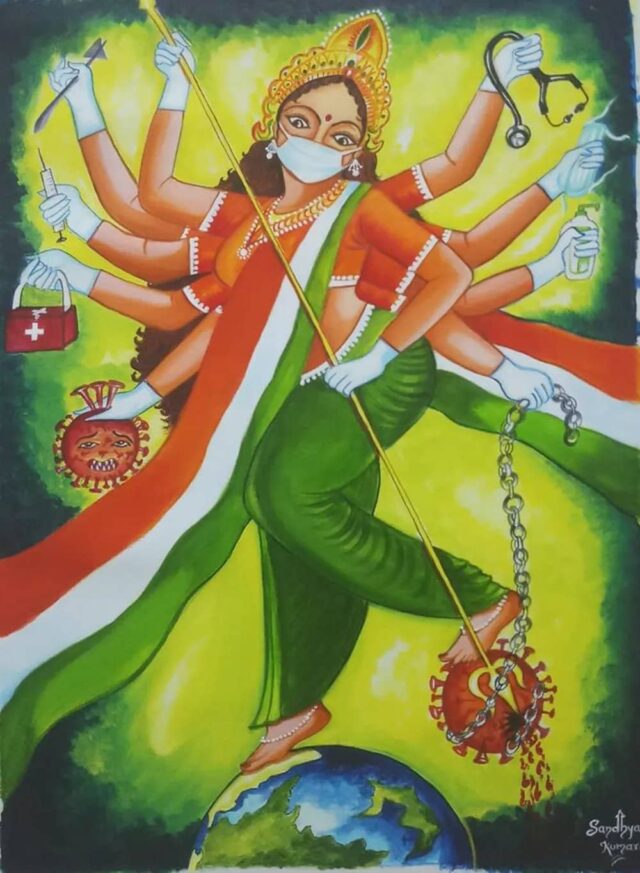Hindu religion is known for its diverse range of stories, myths, cultures and deities. A simple Google search shows us that the religion worships close to 33 million gods and goddesses! I wish I could hold a Guinness world record for trying to remember at least a fraction of it.
Although Hindus are known for their inclusivity towards ideas and stories about their different deities, it is physically impossible for a person to worship all the gods and goddesses. Many of them are part of cultures of different geographical locations, castes, classes, genders and ways of living.
Plague Amma, or the Goddess of Plague, is one such deity worshipped prominently by the urbanites of Bangalore, and she is part of a remorseful history that has imprinted itself on the psyche of Bangaloreans.
History And The Origin Of The Goddess
Bangalore was affected by a plague in 1898. It was brought into the city by a railway employee who landed first in the cantonment region (the area of the military) of Bangalore. It killed around 10% of the population at that time and 2.6% of the people of the Mysore Kingdom.

At the same time, in a hurry for better infrastructure to contain the plague, the British administrators designated Basavangudi to develop with better sanitation.
It is at this time that the goddess Mariamma, who has different labels such as Muthu Mariamman and Thandu Mariamman, was soon appropriated into the Plague Mariamman! Many temples dedicated to the goddess were built around the Basavanagudi region.
Read More: After A Devastating Plague, This Is How Hyderabad Became A Modern City
The earliest record of a goddess of disease is actually attributed to a demon-turned-goddess named Hariti, who was worshipped during the Justinian plague of Rome that had travelled to India via trade routes.
Mariamman’s shrines were set up in Coimbatore also, but she later got appropriated into ‘Black Mariamma’ and people forgot the history. The goddess is usually portrayed as carrying a scimitar using which she kills demons of disease. She is not represented as ‘motherly and caring’ but as fierce and angry.
A particular temple for the goddess in Basavanagudi is dedicated to ‘Bisulu’ Mariamman, where Bisulu refers to sunlight. It is believed that the sunlight refers to how the goddess derives her power from the sun and that living under an open sky can prevent the formation of bacteria and disease.
That’s actually a good lesson to learn (but please do not go out without masks during the time of COVID!).

It is said that even today, people go to temples such as Seethal Matha and Renuka Devi to perform rituals and cure themselves of diseases.
How Was The Plague Tackled?
The British government took drastic measures to contain the plague. Hospitals were built to accommodate patients, which also improved healthcare conditions for handling the Spanish flu that would come to India in 1918. Cities developed and improved, people were offered money for bringing dead rats and mass migrations were banned.
While science did its job, people also resorted to rituals and worshipping to find some hope. Flower offerings and blood sacrifices were a common practice.
After recovery, patients participated in self-flagellation and painful piercings. Devotees were also injected with a milder form of pus, which the goddess was believed to possess and cure. It’s like a ritualistic version of the vaccine!
Upper caste people of the region condemned such a practice as they believed it belonged only to the lower caste.
COVID And The Plague Amma
Although Mariamman was forgotten with the advent of research and development, there are still people who appropriate the goddess and worship her. In recent times, many Bangaloreans have referred to her as the Traffic Circle Amman and the AIDS Amma.

Due to lockdown, many people were not able to visit the goddess, but the priests made sure she was worshipped and given offerings to tackle COVID-19. Indian artists have also drawn her as the ‘Coronavirus Mardini’ where she has been adorned with a mask.
In fact, a new deity by the name of ‘Corona Devi’ has also been installed in a temple in West Bengal!
Science or myth, the need of the hour is to find hope, and any kind of narrative that serves the purpose is a wonderful thing!
Image Credits: Google Images
Sources: Bangalore Mirror, The Conversation, Citizen Matters
Find the Blogger: @aiswaryanil
This post is tagged under: hindu gods, plague amma, was there a plague in india, coronavirus, covid, hindutva, spirituality, goddesses, devi, temples, temples in india, temples named after the plague, diseases, flu, diseases in india, which plague hit colonial india in 1800s, which place worships plague amma, what is plague amma, is there a goddess of disease, gods of diseases, bangalore cantonment, basavanagudi, mariamma temples, ashwath katte, bannerghatta, colonisation in bangalore, who is aidsamma, corona devi, indian rituals and beliefs, hinduism and covid
Other Recommendations:
This Bangalore Artist Turns Ordinary People Into Mythological Figures/Iconic Works Of Art
































